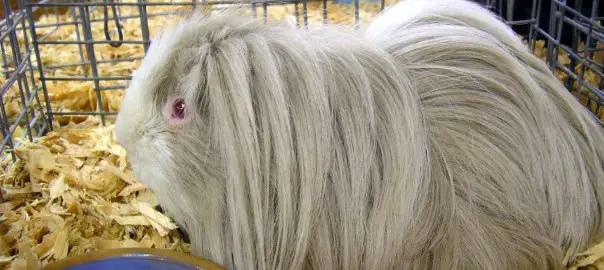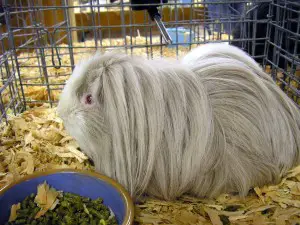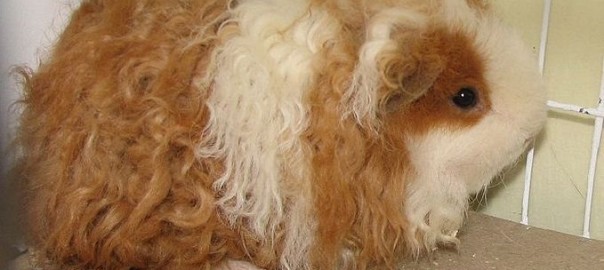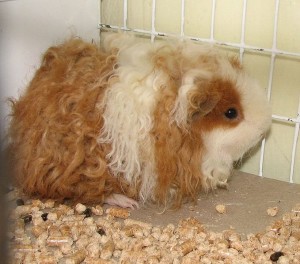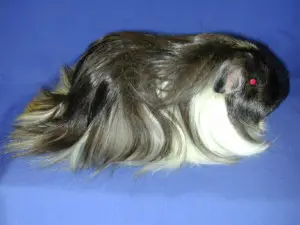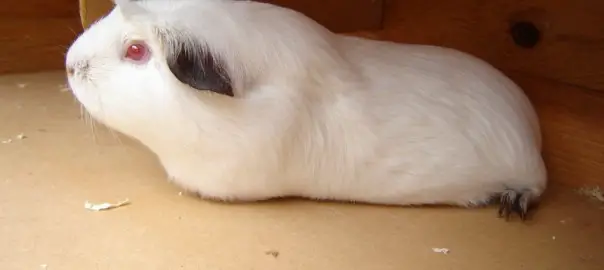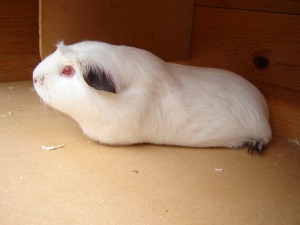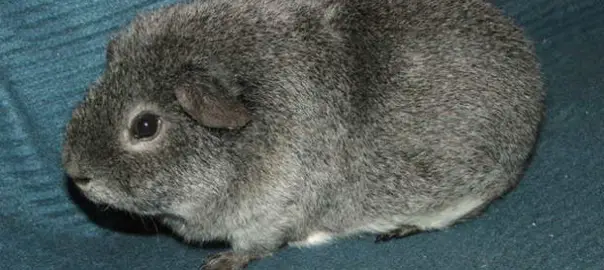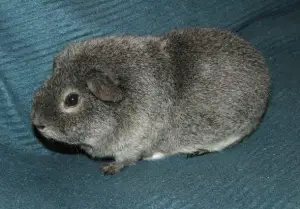The agouti guinea pig is an amazingly beautiful guinea pig which is loved the world over for its smooth coat and distinctive ticking.
This is a detailed guide to the agouti focusing on its appearance, colours, caring requirements and showing requirements.
To start off here are some facts….
19 facts to introduce you to the agouti guinea pig
- The agouti is pronounced a-goo-tee
- It is highly recommended as a starter guinea pig
- It has large petal shaped ears
- Its eyes and paws are quite large
- It has small legs that are quite stubby
- It has a large round body
- They are often said to be very friendly guinea pigs
- Their hair shaft has two colours with the main part being one colour with the tip of the shaft another so as to give its coat a peppered look.
- An agouti has six colour variations; silver, lemon, golden, cream, cinnamon and chocolate
- A chocolate agouti has deep chocolate hair that has orange ticking.
- A Cinnamon Agouti has deep cinnamon hair with silver ticking
- A silver agouti has deep black hair with silver ticking.
- A lemon agouti has deep black hair with lemon ticking
- A golden agouti has deep black hair with golden ticking.
- A cream agouti has deep chocolate hair with cream ticking.
- It looks very much like the wild guinea pig of south America
- Agouti’s have dark eyes
- They are very robust and strong guinea pigs
- They are easy to tame

image: flickr
In a bit more detail…..
Caring for an Agouti guinea pig
Because of their smooth hair, Agouti’s make great guinea pigs for children or those who have never owned one before. Their hair doesn’t need much maintenance at all compared to other guinea pig breeds. Just make sure it gets plenty of stroking time and the occasional brush is very much appreciated by them.
They can be fed the standard guinea pig diet of timothy hay, fresh water on a daily basis, fresh vegetables and a vitamin c supplement. Lots of fresh grass would also be appreciated if you have it.
They are naturally quite shy guinea pigs but do warm to you as they get to know you, so do spend time with them when you first get them. Like other guinea pigs, they appreciate company the most and do not like to be alone, even if it is just being in the same vicinity as other guinea pigs so do consider getting another guinea pig or two to keep it company if you haven’t already.
As with other breeds, do trim their nails on a monthly basis to keep them from curling and watch for mites and infections on their feet.
Agouti showing standards
The agouti guinea pig is very popular with breeders because of their beautiful appearance, resembling the wild guinea pigs of their south american heritage.
These are the the typical showing standards as stated by the national agouti cavy club
Head – It should be short and broad with a profile that gently curves.
Muzzle – It should be of good width and rounded gently at the nostrils
Eyes – They should be large, bright and bold and nicely set width in between.
Ears – They should be large and drooping, with a lower rim that is parallel to the ground and set with a good width in between.
Body –It should be short and cobby with shoulders that are deep and broad.
Fitness – It should be fit and of good substance that has firm flesh
Ticking – Should be sharp and level over the head, chest, feet and body. its under colour should be carried well down to the skin.
Belly – Should be the same colour as the ticking colour.
Coat – should be soft and silky, should be clean and short and groomed free of guard hairs
Extra Guidance For Showing An Agouti Guinea Pig
- It is a dark-eyes guinea pig where the ticking covers the whole of its body apart from its belly
- When an agouti is judged, the quality of the ticking, type, colour, and condition are most significant.
- An agouti should not be penalised for any minor faults they have if the have these kind of faults.
- The most important thing is their quality or cobbyness as opposed to their size
- It is vital that the agouti is groomed so as to produce and even effect on its body and sides
- Poor colour can occur when it has chest faults so do be aware of this.
- Agouti’s should not be penalised for having a wide belly except when the colour of the belly is visible when viewed from the side.
- It is better for an Agouti to have dark or un-ticked feet rather than light or uneven feet.
The Colours of Agouti Guinea Pigs
Cinnamon agouti’s – It has a deep rich cinnamon under-colour that has a silver ticking. its belly is a silver colour that is rich and even and has no whiteness. Its eyes are a ruby colour and has ears and pads that are a cinnamon colour.
Lemon agouti – It has an under-colour that is deep black that has a lemon ticking. Its belly colour should be an even lemon. They have dark eyes and black ears and pads.
Chocolate agouti – It has a deep rich chocolate under-colour that has an orange ticking. Its belly has a rich orange colour and it has ruby eyes, it has ears and pads that are chocolate.
Cream Agouti – It has a a deep rich chocolate colour that has cream ticking. Its belly should be cream, it should have ruby coloured eyes and chocolate pads and ears.
Golden Agouti – It has an under colour that is deep black with dark golden ticking. Its belly should be a rich and even mahogany and not have any brassiness. It has dark eyes and it has black ears and pads
Silver agouti – Has a deep black under-colour. It has a belly which is a rich and even silver. No whiteness. It should have dark eyes and black ears and pads
